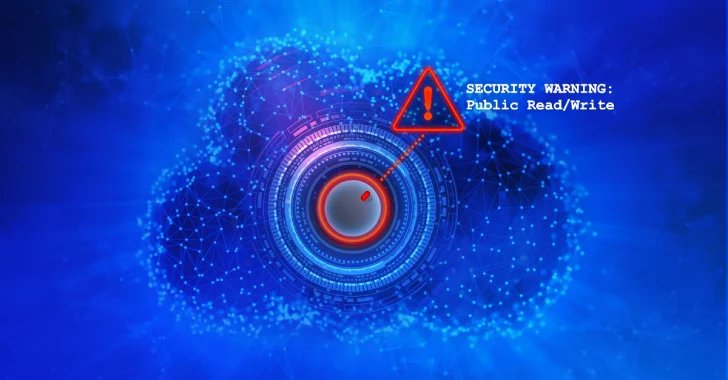In SaaS safety conversations, “misconfiguration” and “vulnerability” are sometimes used interchangeably. However they aren’t the identical factor. And misunderstanding the excellence can result in quiet, actual publicity.
This confusion is extra than simply semantics. This displays a deeper false impression of the shared duty mannequin, particularly in SaaS environments the place the boundaries between vendor and buyer duty are sometimes unclear.
A easy breakdown
Vulnerability It is a codebase flaw within the SaaS platform itself. These are solely points that the seller can patch. Suppose zero-day and code-level exploits.
FraudAlternatively, it’s consumer managed. These are because of how the platform is ready up: who has entry, which integrations are related, and which insurance policies are in place (or not). The misperception might appear like a third-party app with extreme entry, or a delicate inner web site that’s mispensed.
It is a shared mannequin, however divides duty
Most SaaS suppliers function beneath the shared duty mannequin. It protects your infrastructure, gives uptime dedication, and platform-level safety. In SAAS, this mannequin signifies that distributors deal with the underlying internet hosting infrastructure and methods, with clients being liable for how purposes are configured, entry administration, and information sharing management. It is as much as the shopper to soundly configure and use the appliance.

This contains identification administration, permissions, information sharing insurance policies, and third-party integrations. These aren’t non-compulsory safety layers. They’re fundamentals.
That disconnection is mirrored within the information: 53% of organizations say that SaaS safety belief is predicated on belief in distributors. SaaS Safety 2025 Report Standing. The truth is that, assuming that the seller is coping with every thing, every thing may create harmful blind spots, particularly if you management the settings that clients are almost definitely to violate.
Risk detection can by no means catch something that has by no means been recorded
Most incidents don’t embrace superior assaults and even risk actors that trigger alerts. As a substitute, they stem from unnoticed configuration or coverage points. The SAAS Safety 2025 report identifies that 41% of incidents have been attributable to allow points, and 29% have been attributable to false points. These dangers aren’t proven in conventional detection instruments (together with SaaS risk detection platforms) as a result of they aren’t triggered by consumer conduct. As a substitute, it is burned into the best way the system is ready up. They’re solely seen by straight analyzing configuration, permissions, and integration settings, not logs or alerts.
That is what appears like a typical SaaS assault path. It begins with an try to entry and ends with information extraction. Every step is both blocked by posture management (prevention) or detected by anomaly and event-driven alerts (detection).

Nonetheless, not all dangers are proven within the log file. It could possibly solely be handled by strengthening the atmosphere earlier than the assault begins.
Seize actions similar to logs, logins, file entry, and administration adjustments. Nonetheless, extreme authority, unsecured third-party connections, or overexposed information aren’t actions. These are circumstances. If nobody interacts with them, they do not go away traces within the log file.
This hole isn’t theoretical. A examine of Salesforce’s Omnistudio platform (designed for low-code customization in regulatory industries similar to healthcare, monetary companies and authorities workflows) revealed a key false impression that conventional surveillance instruments couldn’t be detected. These weren’t instances of ambiguous edges. It included a permission mannequin that uncovered delicate information by default, and a low-coded element that gave it extra entry than meant. The dangers have been actual, however the sign was silent.
Detection stays vital to reply to aggressive threats, but it surely must be layered on a protected posture fairly than as a alternative.
Construct a protected design SaaS program
The underside line is that this: you can not detect a method out of the issue of confusion. If the danger is current in the best way the system is ready up, no detection is caught. Posture administration should come first.
As a substitute of responding to violations, organizations ought to give attention to stopping the circumstances that trigger them. This begins with visibility into configuration, permissions, third-party entry, Shadow AI, and the harmful combos that attackers exploit.
Risk detection stays vital. Not due to weak posture, however as a result of the system isn’t bulletproof. Appomni combines robust preventive attitudes with excessive constancy detection to assist clients create layered defensive methods that cease recognized dangers and catch the unknown.
A wiser strategy to SaaS safety
To construct your newest SaaS safety technique, begin with what’s really in your management. The most effective time to deal with SaaS danger is earlier than it turns into a problem, so it focuses on guaranteeing configuration, managing entry and establishing visibility.

Prepared to repair the SaaS posture hole? If you wish to ensure that most groups are lacking and that the primary organizations do it in another way, 2025 SAAS Safety Report I am going to break it. From driver violations to the hole between possession and confidence, it’s about revealing how attitudes proceed to form the end result.









